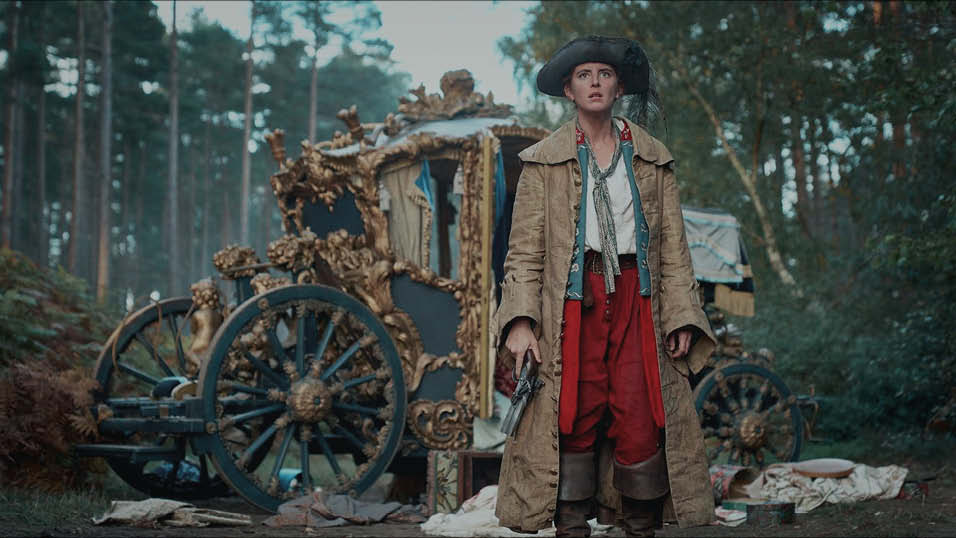There has been a huge amount of hype around 4K in the production sector for several years now.
4K shooting is consistently the big talking point at major production trade shows like Las Vegas’s NAB, Amsterdam’s IBC and London’s BVE, with manufacturers vying to outdo each other with their latest 4K camera and post production offerings.
Magazines and websites (including Televisual), devote plenty of coverage to new 4K kit and launches. And consumers have already started to splash out on 4K Ultra HD sets, amid marketing pushes for the format by set manufacturers.
Given all the talk about 4K/UHD, one could easily be forgiven for thinking that the format has already supplanted HD as the key production format. However, 4K production has actually been very slow to take off. There is currently very little demand from the main UK broadcasters for 4K content because they lack the infrastructure to deliver data heavy 4K programming.
The migration to 4K production will happen, but only slowly. Sky is planning its new Sky Q service later in 2016, which will be Ultra HD compatible. BT launched its Ultra HD sports channel last summer and Amazon and Netflix are commissioning content in 4K.
Televisual’s recent Production Technology Survey found that only 30% of programme makers had shot in 4K in the past year. Many of these said they filmed in 4K to future-proof their productions or because they want to achieve the best quality visuals possible for high-end docs, drama, commercial or film. Other reasons given for shooting in 4K were the greater flexibility it gives in the edit in terms of cropping, re-framing, grading and vfx. Very few have mastered in 4K though, choosing to downconvert to HD for post production. Only 12% said they have mastered in 4K.
It’s a trend confirmed by producer director and DoP Sean Lewis (Hunted, Gold Rush), who is also a tutor on DV Talent’s ‘Shooting and Directing’ courses. He says producers and broadcasters, in the main, see 4K as an additional bottom line expense, meaning that few “want to touch it.” Corporate clients, he adds, are the most open to future proofing their content in 4K.
Jai Cave, head of operations at Envy, one of the UK’s leading broadcast post houses, backs up this view. Most 4K projects Envy has worked on in the last year have been for advertising clients or for outdoor visual displays. However, he predicts an uplift in demand for 4K co-production this year, where UK broadcasters partner with US or international broadcasters who want 4K content.
Envy is investing in 4K kit – it has just installed a new 4K Baselight, five 4K Flames and has a new 4K Symphony suite scheduled. “There is definitely going to be more 4K this year, but we are not seeing an out and out replacement of HD with 4K because the broadcaster market isn’t there yet,” says Cave.
For all its advantages in terms of picture quality, 4K is more complex, time-consuming and expensive to shoot and edit than HD. Pioneer Productions md Kirstie McLure says the cost uplift is comparable to the shift from SD to HD, which had an approximate 35% increase in cost.
During a shoot, the key financial and technical challenges are around data management and storage. Phil Lewis, senior editor for Middlechild Production on two recent 4K projects Running the World (pictured above) and Demolition Man for The Insight Channel says recording in 4K is almost like returning to the days of shooting in film, when programme makers had to think incredibly carefully about how much film they were using.
Lewis says: “|The sheer size of the footage turns hard drive storage, a once seemingly limitless resource in HD into an incredibly finite one. Our current projects are shot at 4K (UHD) 50fps at 550mb/s, over 10 x what we shoot for HD. So when our cameraman forgets he is filming and shoots his foot for 6 minutes that’s well over an hour of HD footage and that cameraman has shot himself in the foot in more ways than one (this actually happened).”
Lewis adds: “Just hitting record before finding focus can waste gigabytes of space so our shooters must be well disciplined.”
A 4K shoot also needs an experienced DIT on set. 4K files, unsurprisingly, require four times the space needed for HD. So the need for back up and data transfer increases in line with this: the simple act of taking the recording card out of the camera, transferring the data, cleaning the card and putting it back into the camera happens more often and takes significantly more time. “The DIT role comes into its own on these kind of shoots, especially on location. I don’t think you can do a 4K shoot without a DIT person,” says Derren Lawford, creative director of Woodcut Media.
Things get arguably more complex in post. Data transfer times are longer, while kit needs to be more powerful and robust. Transcoding, says Lawford, “always took longer than we thought. It put a much larger dent in our edit schedule. You’d get back and be waiting for hours for things to be transcoded.”
And, just as it seemed like anyone could online using a fairly modern computer, 4K has blown that option right out of the water. Powerful machines with fast hard drives are needed to make even
“Using 4K media in a small team workflow is challenging in many ways,” says David Stephens, head of post production at Middlechild. “Most of these are in regards to space and the size of the company’s server or Raid.” He says the stack of drives and media from recent 4K projects at Middlechild became so large that it created a ‘media wrangling minefield’, only solved by investing in a larger Raid and an Avid ISIS with fibre optic connected for its online suite.
Some chose to downres the image for offline, others to do it in 4K. For Pioneer’s Evolution of Us film, the team conducted offline at a ratio of 1:1 to ensure full clarity of image. “This is critical,” argues Pioneer’s McLure. “It prevents any nasty surprises in the online which were surpressed by the offline quality of the 4K image, which can lead to additional re-edits and therefore further costs.”
Once post has taken place, there’s the issue of getting huge 4K files to clients. “The size of final exports is also a concern, as a 25 minute production is around 250gb. So sending these final versions to clients means sending drives via courier,” says Middlechild’s Stephens.
For now, though, reality or documentary series, which use hours of rushes, are not suited to 4K production. However, it won’t be long before storage and processing power catches up with the demands of 4K workflows, opening up the format to a wider range of productions. In the meantime, though, tight workflow planning and confident budgeting can minimise some of the pain of producing in 4K.
This article is taken from the January edition of Televisual. See the magazine for full article plus Q&As with programme makers who have produced shows in 4K.
Tim Dams
Share this story

















